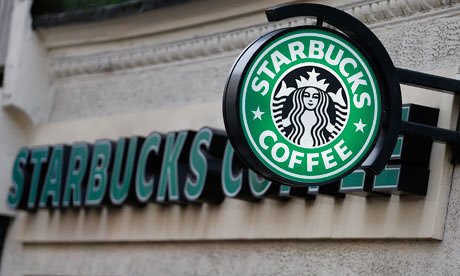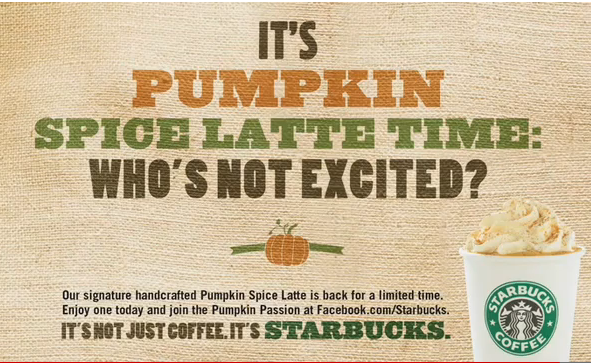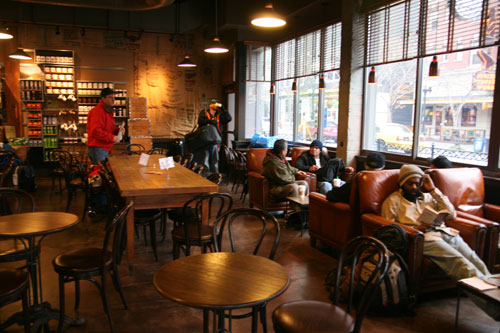So the first indoor tournament of Ultimate just passed and I have to say, I’m getting too old to run around for 20 minutes straight, for 8 games in the space of two days. All I can say is, I need a coffee.
The main part of this blog focuses on the strength of Starbucks’ brand image and how they have managed to stay within the UK market.
I mean we could mention that not paying taxes does wonders for your investment power but we won’t start that here, the other however is how they use their coffee and innovation to take over the market.

Branding has become one of the most powerful tools that companies can use. (Larson, 2002) considers brand personality as being the first reaction people have when they come into contact with a brand, solely based on what they hear, taste, see or touch.
(Sheena & Naresh, 2012) states that for a brand to be successful it must create a long binding relationship with the consumer. Within most literature individuals have tried to explain the link between brand image and the consumer. (Hawkins et al, 2012) for example, states that each consumer will choose to purchase the respective product whose personalities match with his/hers own personality. I don’t know about you but I don’t think my personality matches with a cup of coffee.
With relation to Starbucks and its main product being coffee, we can focus on how (Sheena & Naresh, 2012) describes the brand market as being “thronged with customization”. This means each marketer has to be able to create something unique to the consumer.
Due to this type of market, all consumers have the ability to demand an individual version of whatever type of product is being put on sale (Upshaw, 1995). I mean who doesn’t like to add a small twist to the classic ‘Cup of Jo’. (FYI I’ll happily accept a Venti Latte with a Hazelnut syrup shot).

In a paper written by (Reimann et al, 2012), they state that with the use of the self-expansion theory we can study how consumers use the same criteria to choose both brand relationships and individuals relationships. (Belk, 1988) explains how and why consumers form these similar types of relationships with objects or brands. Whilst (Fournier, 1998) mentions how brands can create the sense of a warm feeling amongst consumers, can generate a pleasurable experience of being cared for, and bond consumers in a close connection. Starbucks does this well by giving us the sense of a modern day coffee shop whilst making us as customers feel welcome at the same time.

An interesting study was conducted by (Reimann et al, 2012), in it they focused on the neuropsychological side of how we develop our brand relationships. With the use of three different studies they were able to focus on how we as consumers choose build our relationship with brands and what part of our brain is triggered when we see a brand that we have had a relationship with before. If you want to read into the study further, then I will leave the link at the bottom of the page.
Within this blog, we have touched upon the likes of brand images and how the likes of Starbucks use this to their advantage when it comes to introducing new Coffee or keeping their relationships strong with the products that they already sell. I mentioned that consumers like to choose products based on how they choose their relationships with others and even talked about how Starbucks makes use of making you feel warm and welcome wherever you go. If it wasn’t for this and many other little factors, then Starbucks as well as other companies wouldn’t have the strong brand image that they have today.
p.s. Here’s the link for you guys http://www.sciencedirect.com/science/article/pii/S1057740811001069
References
Belk, R. W. (1988). Possessions and the extended self . Journal of Consumer Research , 139-168.
Fournier, S. (1998). Consumers and their brands: Developing relationship theory in consumer reasearch . Journal of Consumer Research , 343-353.
Hawkins, D., Best, R., & Coney, K. (2001). Consumer Behaviour: Building Marketing Strategy. New York: McGraw-Hill.
Larson, D. (2002). Building a Brands Personality from the Customer Up. Direct Marketing, 65(6).
Reimann, M., Castano, R., Zaichkowsky, J., & Bechara, A. (2012). How we relate to brands: Psychological and neurophysiological insights into consumer-brand relationships. Journal of Consumer Psychology, 128-142.
Sheena, & Naresh, G. (2012). Do brand personalities make a difference to consumers? International Conference on Emerging Economies – Prospects and Challenges (pp. 31-37). Puducherry : Elsevier.
Upshaw, L. (1995). Buiding Brand Idenitity . New York : John Wiley & Sons.

Hi. It is interesting talking about how a coffee shop become globally popular. Apart of maintaining its brand relevancy to the customers, somehow this brand is trying to leverage uniqueness in consumers mind. It is not easy to put / mix / create acceptable coffee taste from the ingredient that is not common used for coffee making – but it does (i.e. pumpkin, pannacota, etc.). The brand also help us to associate its brand with ‘coffee’ perception – it is present not only in various leisure / entertainment places with its fresh-brewed coffee, but also in supermarket/grocery store with its ready-to-drink format. With it is Romaniuk & Gaillard (2007) explained that certain associations of the brand within customers will help in buying decision making, and favour purchase to the brand. Which in the end, enhance its brand awareness, performance, and brand equity.
LikeLike
*) Romaniuk & Gallard (2007): http://www.tandfonline.com/doi/pdf/10.1362/026725707X196378?needAccess=true&instName=Bangor+University
LikeLike